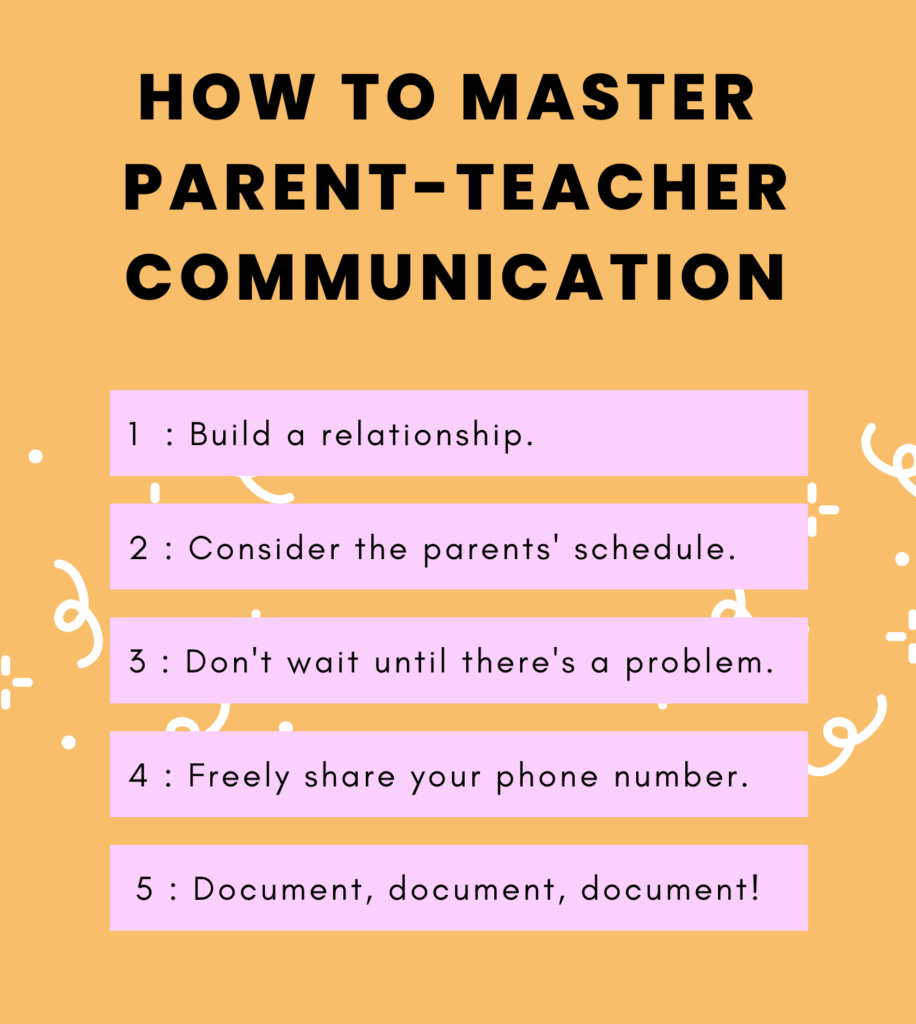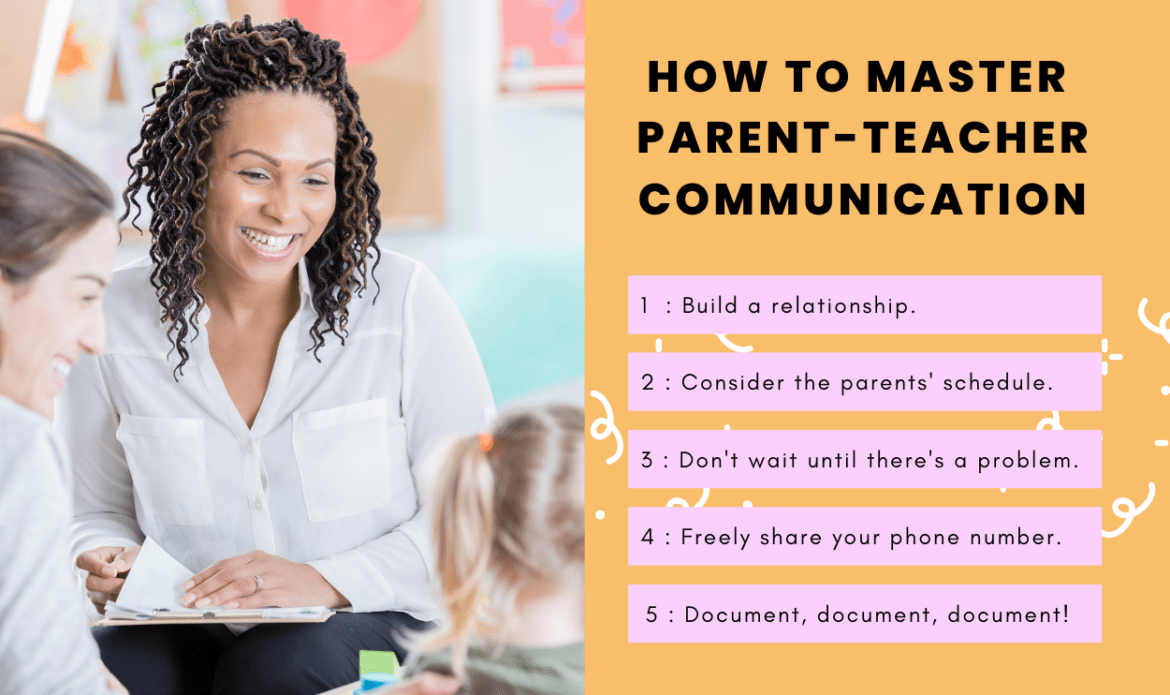Communicating with parents can be a little like showing up to a dance and finding out that there are multiple variations of the Texas Two Step. And who doesn’t love a good Two Step every now and then! Identifying the dance your new partner knows helps you in leading the dance and making it enjoyable – or at least bearable. The same is true when it comes to communicating with a wide variety of parents; quickly identifying their preferred style of communication and tone can assist you in getting early buy-in to having them on your side and open to conversations and ideas throughout the year. Now is the time to start establishing good practices for parent-teacher communication, so that when and if difficult conversations need to happen, parents are more likely to see you as an ally instead of an enemy. Here are a few tips and strategies to consider as the new year starts.
Build a Relationship

Building relationships with students is very helpful in making them feel included and taking ownership of their learning in your class. In the same way, building relationships with parents helps establish that you are on their side when it comes to being committed to helping their child succeed. Knowing that there will be hard conversations that may need to happen in the year with a parent or two makes it even more important to start early in building the relationship.
Building a parent-teacher relationship doesn’t mean that the goal is to become BFFs, connect on social media, or get together outside of school. Building a relationship means establishing your presence in their life for the duration that you are their child’s teacher. And doing so in a way that helps them understand that you have their child’s back, even if it means having hard conversations. Don’t be pushy, but do be consistent in communicating.
Consider the Parents’ Schedules

We’ve all had those years when parent-teacher communication could have easily become a full-time job in and of itself. It’s easy to expect all the parents to accommodate our schedules and our preferred methods of communication. But, what I’ve found to be true is that differentiation is good when working with parents just as it is with students. Knowing parents’ schedules and trying to accommodate them helps achieve the goal of positive parent-teacher communication. This may mean talking with a parent in the evening when they are available, even though it isn’t during your conference period time. Or it could be scheduling virtual parent-teacher conferences to make sure they can attend.
TIP + Tool: If doing virtual office hours or virtual parent conferences, I’d recommend using Whereby. You can sign up for free and have the benefits of video conferencing without the technical hassle. Parents only need the link to your Whereby room; they don’t need to have their own account. On the free version, you can have:
- Up to 100 attendees per meeting
- Unlimited meetings
- Group meetings for up to 45 minutes
- The ability to lock your room for privacy
- A waiting room area for those waiting for their meeting
Don’t Wait Until There Is a Problem

Touch base with parents on a regular basis to let them know how their child is doing. And offer up a few good points. If needed, create a Google form that allows you to tailor an email to their child. Ok, that may sound impersonal, but I would offer that it is efficient and meaningful because it lets you communicate with more parents while still sharing truthful, personal points about how their child is doing. And with AI on the scene, generating a list of positive things to say is something a third-grader can do.
Create a parent-teacher communication form that allows you to identify the child’s name from a drop-down (and class period if you are not self-contained), choose from a list of positive things to say, and choose from a list of “things to be aware of.” Once you submit the form, you have the content in a spreadsheet that you can easily copy/paste into an email. Then, you can quickly massage the message to cater it to a particular parent. Plus, if you are just a little nerdy, you can add a vlookup formula to pull the parent’s email into the form submission so that you don’t have to even go dig that up.
Freely Share Your Personal Phone Number

Sharing your phone number can help when it comes to open parent-teacher communication and building positive methods of communication. If you have mixed feelings about sharing your personal phone number with parents, then consider getting a free Google Voice phone number to share. You can direct the Google Voice number to ring your cell number or landline. The person calling you will not know the number you have directed to; they will only know the Google Voice number you shared.
When someone calls your Google Voice number, it will ring on the phone(s) that you’ve designated and even assist in screening the call. If they leave a voicemail, it will send an email of the voicemail and transcript to your email address. You can access Google Voice from the web or app. OpenPhone gives you the details of Everything You Need to Know; even though they aren’t writing to educators, you will definitely be able to understand the benefits of having a Google Voice number.
Document, Document, Document!

Yes, just like location is key to real estate, documentation is key to establishing good records, which may come into play later in the year. If you are old school, then have a 3-ring binder with a page for each student which you can add to as needed. If you are digital, then start a Google Form or spreadsheet to collect and organize instances that need to be documented. Some teachers have a Google Form that students complete if they don’t turn in an assignment or if there is a behavioral problem. The form has the student identify what happened, what the rule was, how they plan to correct the instance or behavior, and why it is important to do the right thing.
Having students participate in documenting their infractions greatly reduces parents seeing you as the enemy. It puts the responsibility and accountability more on the students to own their behavior and actions. Hopefully, you won’t have to document much, but there are times when documentation shows a trend that is beneficial in helping students get additional services and support.

While parent-teacher communication may not be as fun as going to a dance, hopefully, these tips and strategies will help you step on fewer toes throughout this school year and allow you to focus on more of why you teach. Feel free to leave a comment on additional tips and strategies that you found helpful for good parent-teacher communication. We’d love to hear from you.

